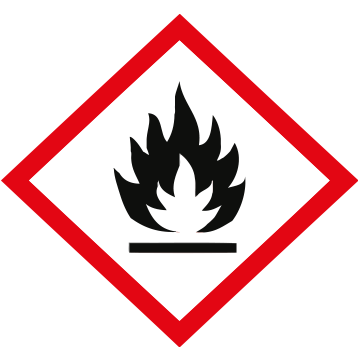What is Bioethanol Fuel?
What is 'Bioethanol' Fuel?
Bioethanol is a renewable and eco-friendly fuel made from bio waste, to create a clean-burning flame. This energy source is made by fermenting the sugar and starch components of plant by-products - mainly sugarcane and crops like grain, using yeast. It is also made from corn, potatoes, milk, rice, beetroot and recently grapes, banana, and dates depending on the countries agricultural strength.
Today, bioethanol has many uses: It is blended with petrol to make a truly sustainable transport fuel, it's used in cosmetic and other manufacturing processes, and it creates the clean burning, beautiful, dancing flame in our fireplaces and stoves that we supply.
When used in our Bioethanol fireplaces it doesn't produce smoke, ash, or soot, and doesn't need a chimney, making these fires a cleaner and more convenient option.
Carbon Neutral
Bioethanol fuel is completely composed of biological products. The combustion of bio ethanol results in a clean emission: Heat, Steam and Carbon Dioxide.

Carbon dioxide is absorbed by plants. It is then processed via photosynthesis to help the plant grow. This infinite cycle of creation and combustion of energy makes bioethanol a carbon neutral fuel source.
Our Bioethanol Stove Collection uses this fuel to allow a real live flame, produces heat and is in a stove that doesn't require a flue.
Bioethanol Fuel Consumption & Running Costs
A typical 1 litre bottle of biofuel will give around 3.5 to 5 hours depending on your fireplace model and how you are running it. Which means with a 12-pack last upto 60 hours burn time.
Its important to remember that bioethanol fires are never intended to be used as the main source of heating in any home and is for occasional use. Therefore consumption can vary between models, usage and quantity of fuel purchased.
On average it works out at approx. £3 to £5 per litre depending on the quantity of fuel you buy at a time, making it as little as 0.60p per hour and remember most bio fires can produce 1-3kW per hour. Burning biofuel is a great alternative to provide warmth and atmosphere, its clean, easy and has a real flame to admire.
Low Odour Fuel - Detailed Information
One of our most popular fuel we sell is the low odour 96.6% liquid bioethanol fuel and is produced from molasses, a waste by-product of growing sugar beet, making it an environmentally friendly fuel with a low carbon footprint.
Its designed to be used indoors and outdoors by most of our bioethanol fireplaces and is eco-friendly, smokeless, clean-burning, almost odourless, ash free and produced under the ISO9001:2015 quality management system, to ensure you a consistent ethanol fuel product every time. The transparent ethanol liquid used is double rectified to 96.6% alcohol for extra purity, after which it is denatured according to EU law, to make it unfit for human consumption. Many of the well known bioethanol fireplace brands, insist on using 96.6% bioethanol liquid fuel in their fireplaces, to ensure correct operation and clean combustion.
Its is classed as a renewable fuel. The products of combustion are heat, water vapour and CO2. Because bioethanol fuels produce no soot when the burn, they can be used in cities that ban burning of solid fuels.
C2H5OH + 3O2 ---> 2CO2 + 3H2O + Heat
(Ethanol) + (Oxygen) ---> (Carbon Dioxide) + (Water Vapour)
Scented and Low odour Fuel Purchase
For safety reasons when you purchase bioethanol fuel from The Stove House Ltd you are agreeing to the safety information and guides found here.
Each bottle incorporates a tamperproof seal and child-proof safety cap, this ensures safe storage of your factory-sealed bottle.
WARNING:
Can be explosive, causing serious injury or death if not handled correctly.
Air Quality and Ventilation
Proper ventilation is crucial when using a bioethanol fireplace, as burning bioethanol produces carbon dioxide. Ensuring good airflow in the room is essential to prevent the buildup of carbon dioxide and maintain good air quality. This can be achieved by opening a window or using a ventilation system. It’s also recommended to use a bioethanol fireplace in a well-ventilated area, such as a living room or kitchen, rather than a small, enclosed space like a bedroom or bathroom. By taking these precautions, you can enjoy the benefits of your bioethanol fireplace while keeping your indoor air quality safe and healthy.
DO NOT POUR ONTO FLAMES OR HOT SURFACES
ONLY REFILL FIRE WHEN COMPLETELY COOL
The bioethanol fuel we supply is highly flammable and presents a real danger when not used correctly.
To ensure safe use, you must carefully read and adhere to all the appliance manufacturers' instructions.
Safety Data Sheet - SDS
The Low odour 96.6% liquid ethanol fuel SDS is available here. SDS
Hazards
H225- Highly flammable liquid and vapour.
H319- Causes serious eye irritation.


DANGER
UN1170
Classification According to EC No. 12722008
Precautions
Keep out of reach of children. Keep away from heat/sparks/open flames/hot surfaces: No smoking. Take precautionary measures against static discharge. Wash hands thoroughly after handling. Wear protective gloves/protective clothing/eye protection/face protection. IF SWALLOWED: Rinse mouth. Do NOT induce vomiting: Get medical advice/attention. IF ON SKIN (or hair): Take off immediately all contaminated clothing: Rinse skin with water/shower. IF INHALED: Remove victim to fresh air and keep at rest in a position comfortable for breathing. IF IN EYES: Rinse cautiously with water for several minutes. Remove contact lenses, if present and easy to do. Continue rinsing. If eye irritation persists: Get medical advice/attention. In case of fire: Use carbon dioxide or dry chemical fire extinguisher. Do not use water jet for extinction.
Storage
Store in a well-ventilated place: Keep container tightly closed: Keep cool: Protect from sunlight.
Disposal
Dispose of contents / container to local / regional / national / international regulations.
